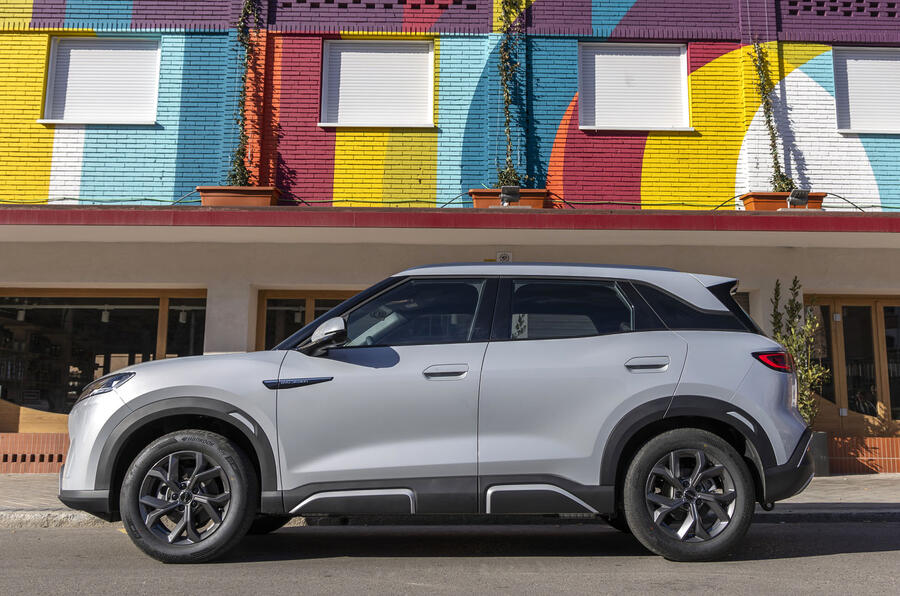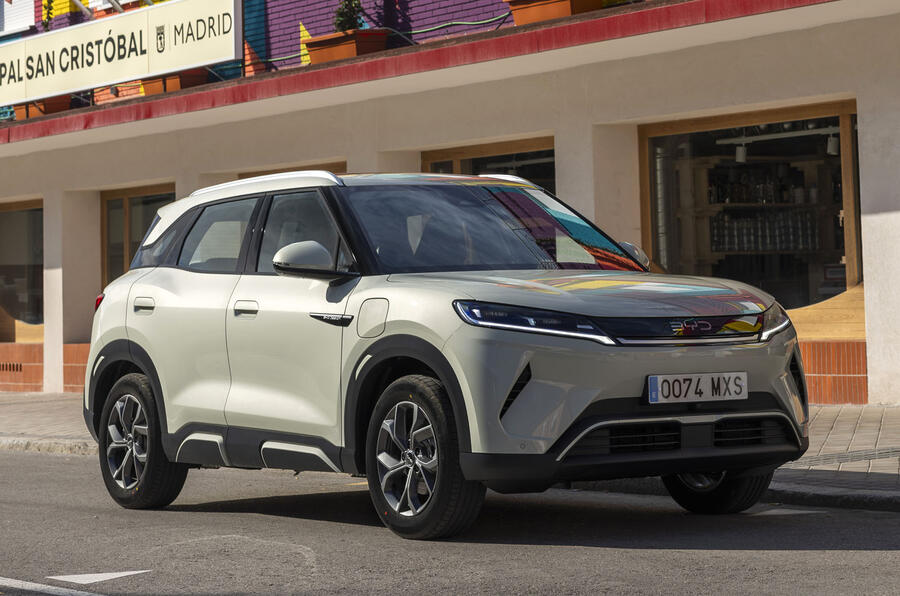New EV slots into BYD line-up between Dolphin and Atto 3 in competitive crossover segment
BYD will launch the Atto 2 crossover in the UK next month, priced from £30,850.
Available to order now, it plugs the gap between the Dolphin hatch and Atto 3 SUV to give BYD a footing in the competitive electric crossover segment.
Its starting price places it in the crosshairs of the Jeep Avenger and Hyundai Kona Electric. However, BYD is positioning it as a more premium offering in the segment, with plans to go after slightly more expensive rivals such as Smart #1 and Volvo EX30.Â
To that end, the company cites the quality of standard kit offered in the Atto 2. For example, the entry-level Boost model comes with 17in alloys, a 12.8in rotatable touchscreen (the same as in the larger Atto 3), wireless charging, a ‘high-tech’ audio system with eight speakers, and vehicle-to-load (V2L) capabilities, which mean it can power external devices such as, BYD notes, a lawnmower. It also gets a heat pump.
The entry-level Boost model comes with a single motor that sends 174bhp to the front wheels and electricity is drawn from a 51.1kWh battery pack that yields a range of 214 miles.Â

A better-equipped Comfort model will arrive later this year. Priced at £34,950, it is expected to get BYD’s 15.6in touchscreen and higher-quality materials. It will also be fitted with a larger, 64.8kWh battery pack that offers up to 261 miles of range and a slighter more powerful, 201bhp front-mounted motor.
The Atto 2 Boost can handle charging rates of up to 82kW, allowing the pack to be juiced from 30-80% in 30 minutes. Comfort increases this to 155kW, dropping the fill-up time to 21 minutes.
Both configurations can hit 62mph from standing in 7.9sec. Top speed is limited to 99mph.

A smaller sibling to the existing Atto 3, the new Atto 2 measures 4.31m long, 1.83m wide and 1.68m tall. That lines it up neatly to serve as a higher-riding alternative to the BYD Dolphin hatchback. The Atto 2 offers seating for five as well as a 400-litre boot.
In addition, the battery is fitted to the car using cell-to-body construction, which is said to boost chassis rigidity.Â



